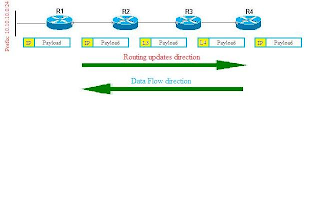MPLS uses the concept of Forwarding Equivalence Class (FEC). The FEC is of a set of packets forwarded in the same manner by the label switching routers (LSR). Each router assigns a label to a FEC and distributes this label to other routers using label distribution protocols forming label switched paths or LSPs.
When a packet is received by the ingress router it determines the next hop and inserts one or more labels to the packet . Then the labeled packets are passed to the next-hop router (downstream). When the packets reach the downstream router, the top most label is examined and used as a unique identifier to look into the label forwarding table to determine the next hop and label operation to be performed on each MPLS packet.
Finally the packet reaches the egress router, the label is removed and the packet is forwarded using an IP lookup or another label based on the MPLS application used.
As you can see the provider routers do not need to examine layer 3 information of the traversed packets, allowing for protocol independent packet forwarding.
When a packet is received by the ingress router it determines the next hop and inserts one or more labels to the packet . Then the labeled packets are passed to the next-hop router (downstream). When the packets reach the downstream router, the top most label is examined and used as a unique identifier to look into the label forwarding table to determine the next hop and label operation to be performed on each MPLS packet.
Finally the packet reaches the egress router, the label is removed and the packet is forwarded using an IP lookup or another label based on the MPLS application used.
As you can see the provider routers do not need to examine layer 3 information of the traversed packets, allowing for protocol independent packet forwarding.
- R1 advertises prefix 10.10.10.0/24 to the network using any IGP.
- Routing information about the subnet flows away from R1.
- An IP packet enters R4 (LER) with a destination of 10.10.10.0/24.
- R4 looks in its label forwarding information base, determines the next hop (R3) and pushes the label assigned by R3 (L4) for this FEC.
- R3 receives labeled packet from R4 with a label L4. R3 examines the LFIB and swaps L3 label to L2.
- R2 receives the MPLS packet, looks up the LFIB and pops the label (penultimate hop popping) before sending the packet to R1 as an IP packet.
- R1 forward the packet to its destination based on IP header information.

Thanks for sharing the knowledge, very useful and easy to understand.
ReplyDeleteContinue doing the same.